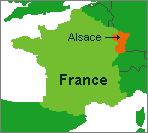Language is arguably the
most important component of culture because much of the rest of it is normally transmitted
orally. It is impossible to understand the subtle nuances and deep meanings of
another culture without knowing its language
well.
Young children are inherently capable of learning the necessary phonemes, morphemes, and syntax as they mature. In other words, they have a genetic propensity to learn language. They come into the world as eager learning machines, and language acquisition is a major aspect of this learning. How children actually learn a language is not entirely clear, however. Most linguists believe that they do it primarily by listening to and trying to communicate with adult speakers. Initially, this means that they imitate the phonemes. Later they begin to learn grammar by imitation as well.
Studies of average American children show that there is rapid learning of language in the early years of life. By age one, typically, they use about three words consisting of single morphemes (such as eat, mom, and more). By six years old, they use about 2,500 morphemes. Simple sentence construction (such as "more milk") usually has begun by about age two. However, in the early stages, children may start by creating a vocabulary and grammar largely of their own construction. They are trying to systematize and regularize their own simple speech. Parents often encourage this "baby talk" by imitating it. This provides positive reinforcement to the child to continue learning. However, some parents continue to do use this "baby talk" with their children long after it ceases to be useful because they think that it sounds cute. When children begin to learn standard grammar, they tend to over regularize it. That is, they learn a general rule and use it in all situations. For instance, the past tense of 97% of English verbs is indicated by adding the suffix ed, as in worked. Young children will often apply it to irregular verbs also. Give becomes gived, take becomes taked, eat becomes eated. Unfortunately for children in English speaking societies, their language has about 165 irregular verbs that must be memorized. Compounding the problem is the fact that the 10 most frequently used verbs in English are irregular (be, have, do, go, say, can, will, see, take, and get). The irregular verbs are very old words in English. Changes in their conjugation have been resisted because they are constantly used in common speech and most native speakers are comfortable using them.
Becoming
Multilingual
Learning a second or third language is easier in early childhood than later. It is particularly important to learn correct pronunciation as young as possible. At any age, learning by constant contact with native speakers in their own society is the quickest and best way. It is superior to taking foreign language classes because it forces you to concentrate on it all of the time. In addition, you are immersed in the culture and learn it simultaneously. This immersion approach can be psychologically stressful, but it is an effective way of getting the new language patterns into long term memory. Young children learn their native language in just this way, since they are surrounded by parents who essentially speak a "foreign" tongue.
Learning a second language can be affected by the patterns of the first language. This is referred to as linguistic interference. There can be some blending of phonemes. For instance, most Americans who learn French in high school or college pronounce French words with a distinctive American accent. Grammar can also be affected. English speakers who learn both French and Spanish sometimes combine grammatical rules of both when speaking either of them. Linguistic interference can also be a problem in learning and using another dialect of a language you already know.
Idioms are often translated literally as a result of linguistic interference. For example, the Spanish phrase "en este momento" becomes "in or at this moment" (the literal translation) instead of "now" when some native Spanish speakers talk in English. Some idioms are more difficult for non-native speakers to learn because they don't make literal sense. This is the case with the following idioms in contemporary American English:
| 1. | Drive down the parkway and park on the driveway. |
|---|---|
| 2. | Chop the tree down and cut the pieces up. |
| 3. | His nose is running and his feet smell. |
 |
People tend to perform mental tasks with the language in which they learned them. For instance, some bilingual French Alsatians living near the border with Germany report that they count in French and do algebra in German. This is because they learned their counting skills and simple mathematics in French at primary schools and abstract algebra in German at secondary schools.
Second languages learned as adults are often quickly forgotten if not used regularly. However, they usually come back quickly with a little study and practice when needed again.